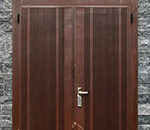In the second part of this series (part 1 on exposure stops) on exposure adjustment using aperture and ISO, Joshua Cripps explains how these two parameters can be used to change the brightness of your images. He also brushes up on the definition of stops:
Often when we talk about reducing the exposure by one stop or increasing it by one stop we only refer to using shutter speed. But when it comes to increasing or decreasing the exposure, shutter speed is not the only answer.
“Stops are just a measure of the relative brightness of your photo… Double the brightness of your photo and you’ve increased exposure by one stop. Half the brightness and you’ve reduced exposure by a stop.”
With ISO, if you increase the number from, 100 to 200 as demonstrated below, you will have increased your exposure by one stop.

Increase of ISO from 100 to 200
Similarly, if you reduce the ISO from 400 to 200 you have reduced the exposure by one stop.
Aperture
With aperture, things are a bit more complicated. Aperture is a circular opening in your lens. The size of the aperture controls the amount of light that enters the camera. However, here’s where geometry comes into the picture.
The area of the circle depends on the square of its radius. When you increase the radius, which is in effect tantamount to changing the f-number, let’s say in this case by a factor of two, you change the area of the aperture by a factor of four. Changing the area of the aperture by a factor of four means you effectively double the exposure. Four times as much light or four times less light means two stops increase or decrease of exposure.
For example, let’s say you’re dialed in to f/8. If you change the aperture to f/16, you have effectively doubled the radius of the aperture by a factor of two. But in effect the area of the aperture has quadrupled. Meaning, you have increased the exposure by two full stops.
Larger F-Number = Smaller Aperture
Another thing to remember is that the larger the f-number you use, the smaller the size of the aperture. So, in the above example when you moved from f/8 to f/16, you made your image two stops darker.

Changing aperture from f/8 to f/16 means a two-stop reduction in exposure.
Now that you understand how changing the aperture impacts the brightness of your images, you’re probably thinking about how to control aperture accurately. If the aperture mumbo-jumbo is getting to you, don’t worry. Most cameras are programmed so that when you click the mode dial three times (in the same direction) it’s equal to a change of one stop of aperture.
While you may tinker with the aperture, ISO, and shutter speed settings, at the end of the day one stop of adjustment will always represent the exact same change in an exposure.
Like This Article?
Don't Miss The Next One!
Join over 100,000 photographers of all experience levels who receive our free photography tips and articles to stay current:






Leave a Reply